6 Best Steelhead Fishing Rigs That Guide Use
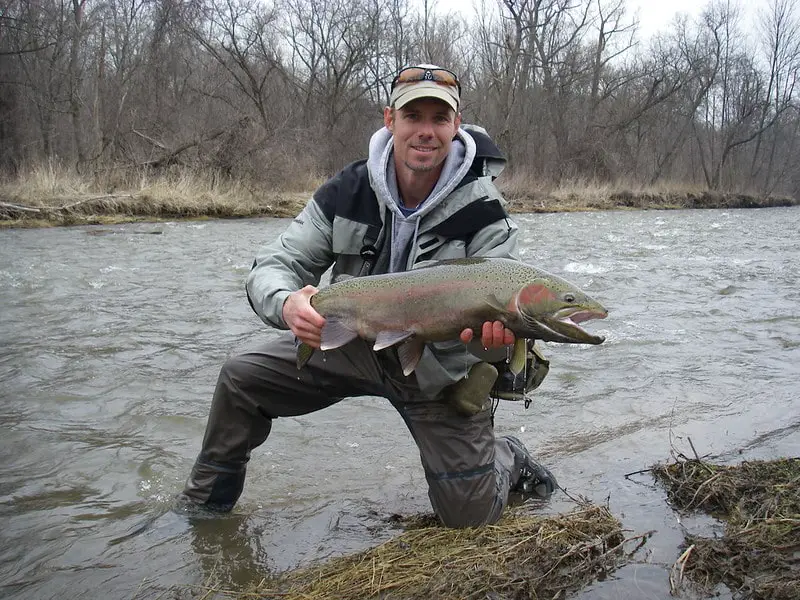
I’m about to share six highly effective steelhead fishing rigs that top steelhead guides use to maximize their clients’ success when using bait. These steelhead fishing setups are suitable for various fishing situations.
I have extensively tested and used numerous rigs for steelhead fishing that I’ve learned from fellow guides and skilled steelhead anglers.
Additionally, I will highlight common rigging mistakes that unknowingly hinder anglers from catching steelhead. By avoiding these errors, you can significantly enhance your chances of landing fish.
The Key Components Of A Good Steelhead Fishing Rig
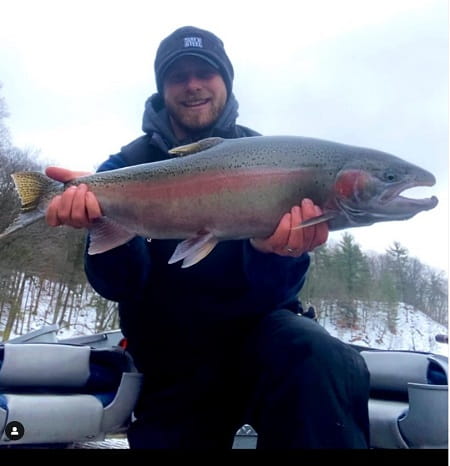
Essential elements of an effective rig include the hook, weights, and the leader. These must all be the right size and in the right places.
If any part of the setup is wrong, your ability to catch fish will be compromised.
Selecting The Right Hook

A high-quality hook should effortlessly penetrate the fish’s mouth during the hookset and maintain a secure hold throughout the fight. Unfortunately, not all hooks fulfill these criteria.
All the fishing guides I know are very picky when it comes to the hooks they use.
To provide their clients with the best chance of hooking and landing steelhead, guides rely on hooks that can efficiently penetrate the fish’s mouth and securely hold it during the battle. They must also be very sharp.
Instead, skilled anglers and guides opt for proven short-shank wide gap hooks such as the Raven Specimen or the Gamaktsu Octopus hook.
Best Hook Size
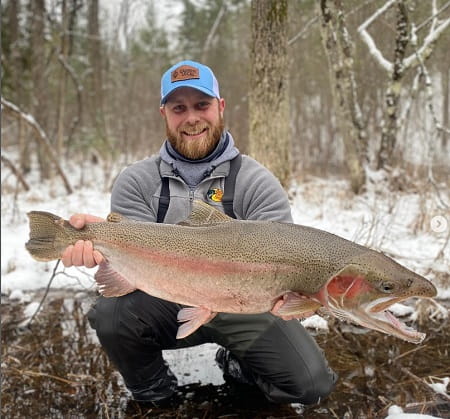
Furthermore, using the wrong hook size in relation to your bait can also impede your fishing success.
Steelhead have excellent vision, especially in slower currents or still water where they have ample time to inspect the bait.
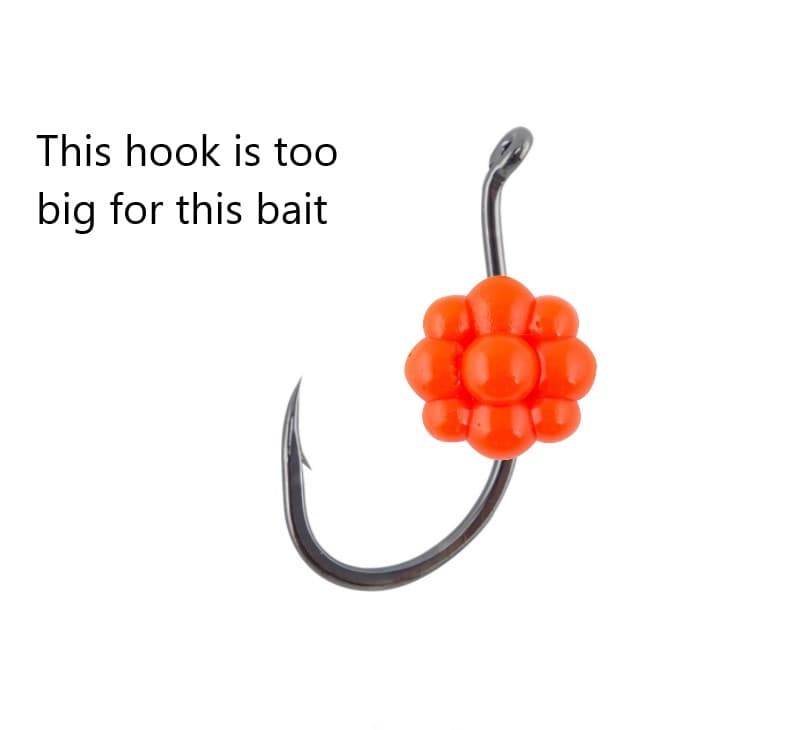
They may choose not to bite if they spot the hook, especially the wiser, more experienced, larger wild steelhead.
Choosing the appropriate hook size is also crucial to success with any fish.
An overly large hook is easily noticeable to the steelhead. A hook that is too small may go unnoticed, which is great, but extra small hooks have a lower hooking and holding ability, and, they are more prone to bending or breaking.
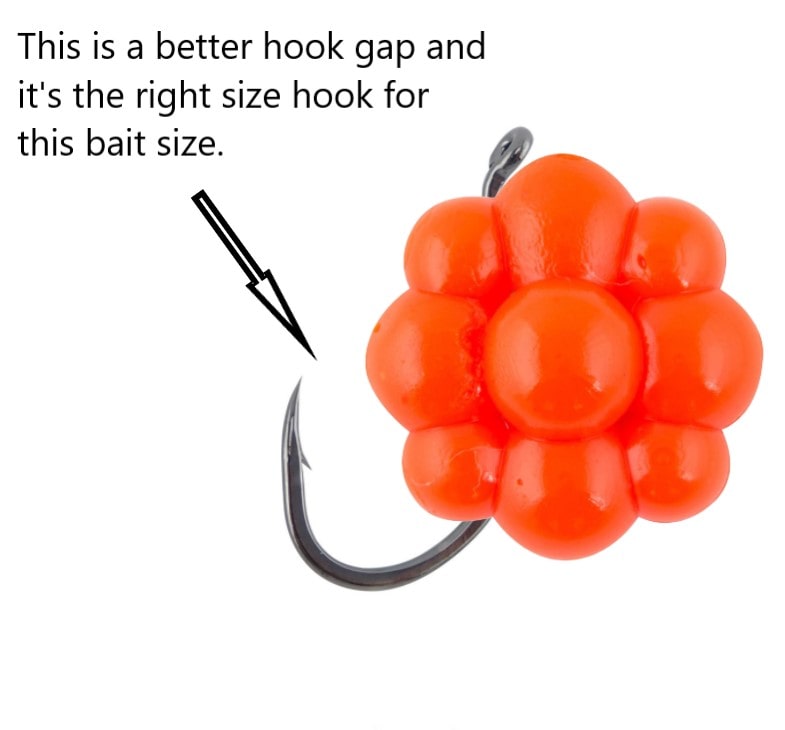
You need to use the right-sized hook based on the size of your bait. So, unless you only use one bait and one size, you need multiple-sized hooks ranging from size 2 to size 10.
In the Great Lakes steelhead region, sizes 6 to 10 is perfect.
For West Coast steelhead where sometimes shrimp and large chunks of skein are used as bait, a size 2 hook might be sufficient, but you could go as small as a size 10 for use with beads or plastic worms.
Also, cheap hooks are more likely to bend and break, so stick with these good-quality hooks.
Proper Bait Placement On The Hook
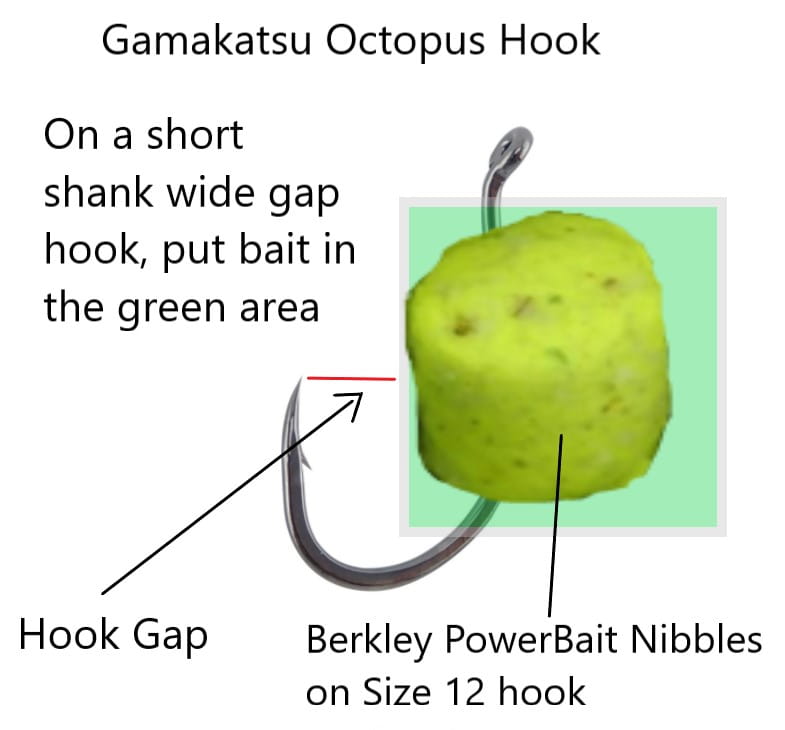
Drawing from years of experience and extensive trial and error, I can confidently state that covering the hook point or filling the hook gap is a big mistake for most baits.
By keeping the hook gap open and the hook point exposed, the fish often hooks itself, especially in currents. This simple adjustment can significantly increase your catch rate.
Choosing the Appropriate Leader Size
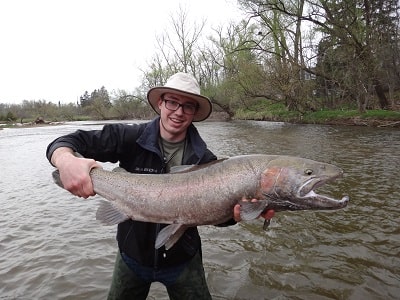
When referring to the leader size, I am specifically discussing the pound test, not the length.
The ideal leader length for each setup can be seen in the diagrams provided below, and the length is usually dependent on the average depth of the river.
I use different leader strengths depending on the size of the steelhead and the conditions of the river.
Through extensive testing under various conditions, I have found that the diameter of the leader line plays a significant role in fishing success. My general rule is to select a line that is thin enough to remain undetected by the steelhead, yet strong enough to prevent break-offs.
Pound Test | Diameter Size | Method | River | Area |
6 pound | 0.007 in. / 0.18 mm | Float Fishing | - Small to Medium / Under 60 feet wide - Clear Water | Great Lakes |
8 pound | 0.008 in. / 0.20 mm | - Float Fishing - Bottom Bouncing - Plunking | - Small to Medium / Under 60 feet wide - Clear water | Great Lakes |
10 pound | 0.009 in. / 0.22 mm | - Float Fishing - Drift Fishing and Bottom Bouncing - Plunking | - Larger Great Lakes Rivers and faster currents - Off colored rivers - Small West Coast Rivers | Great Lakes and West Coast |
12 pound | 0.010 in. / 0.25 mm | - Lure Fishing Great Lakes - Float Fishing West Coast - Drift Fishing West Coast - Plunking on West Coast | - Large Great Lakes Rivers - Small to Medium West Coast Rivers | Great Lake and West Coast |
14 pound | 0.011 in. / 0.28mm | - Float Fishing on West Coast - Drift Fishing on West Coast | Medium to Large Rivers | West Coast |
16 pound | 0.012 in. / 0.31mm | Lure Fishing | Large to XL | West Coast |
My Steelhead Fishing Rigs
These steelhead rigs have been proven effective by myself, fellow guides, and experienced anglers, making them the best rigs for maximizing your fishing success.
It’s important to note that these setups are adaptable to various baits, including spawn bags, worms, minnows, shrimp, or any other bait you choose.
Float Fishing Rigs For Steelhead: Bobber Rigs
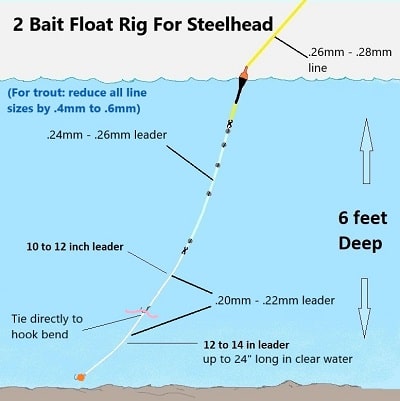
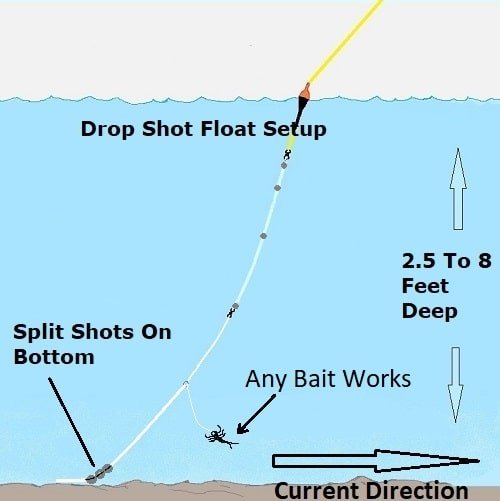
NOTE: If the depth exceeds the length of my rod, I use a slip float. A Slip float makes it easy to cast when you need depths up to 20 feet deep.
In rivers, under 12 feet deep, I prefer a fixed float.
River floats with a pointed tip are best as they enable you to get advanced drifts as I explain in my article on Float Fishing. Advance drifts can double your catch rate on steelhead.
Drift Fishing Rig For Steelhead
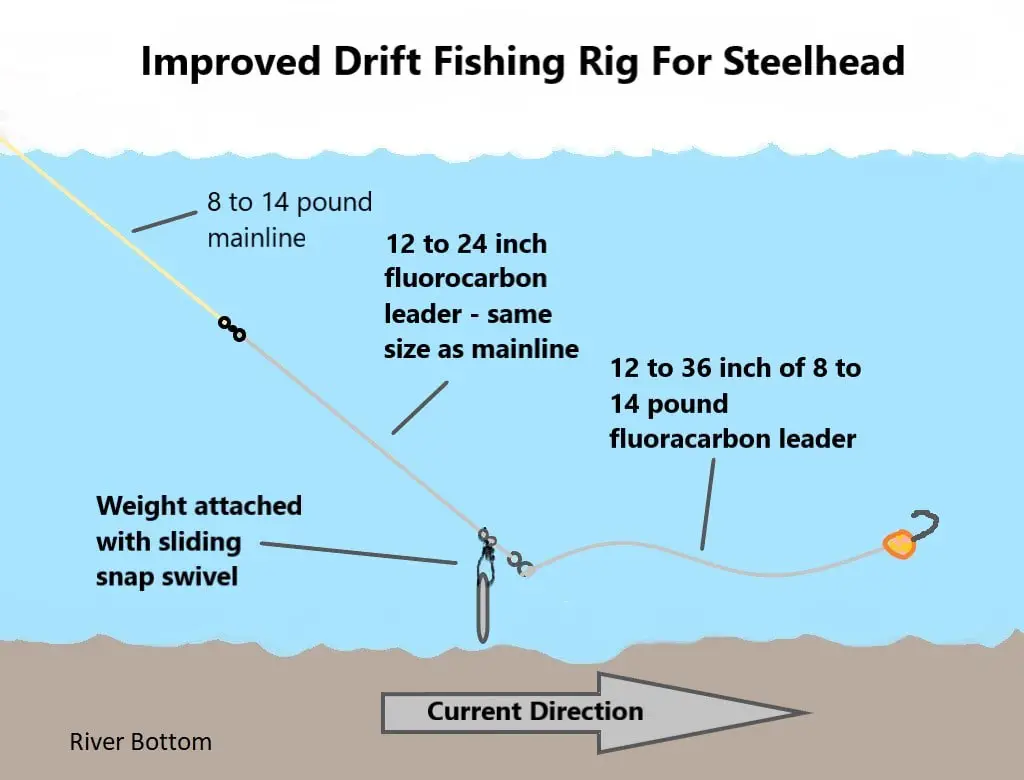
When fishing in large rivers with strong currents or deeper water, the drift fishing method proves to be highly effective.
This approach has yielded successful catches of steelhead, salmon, carp, bass, and catfish.
Bottom Bouncing Steelhead Leader Rig
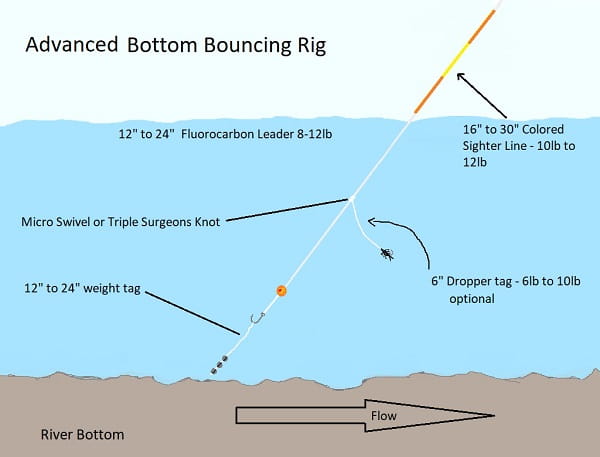
Similar to the drift fishing method, I always use the Bottom Bouncing method when fishing for steelhead in smaller and shallower sections of rivers.
This is the best method in shallow riffles, small runs, small pools, and pocket water.
Still-Water Rigs For Steelhead Fishing: Plunking Rig
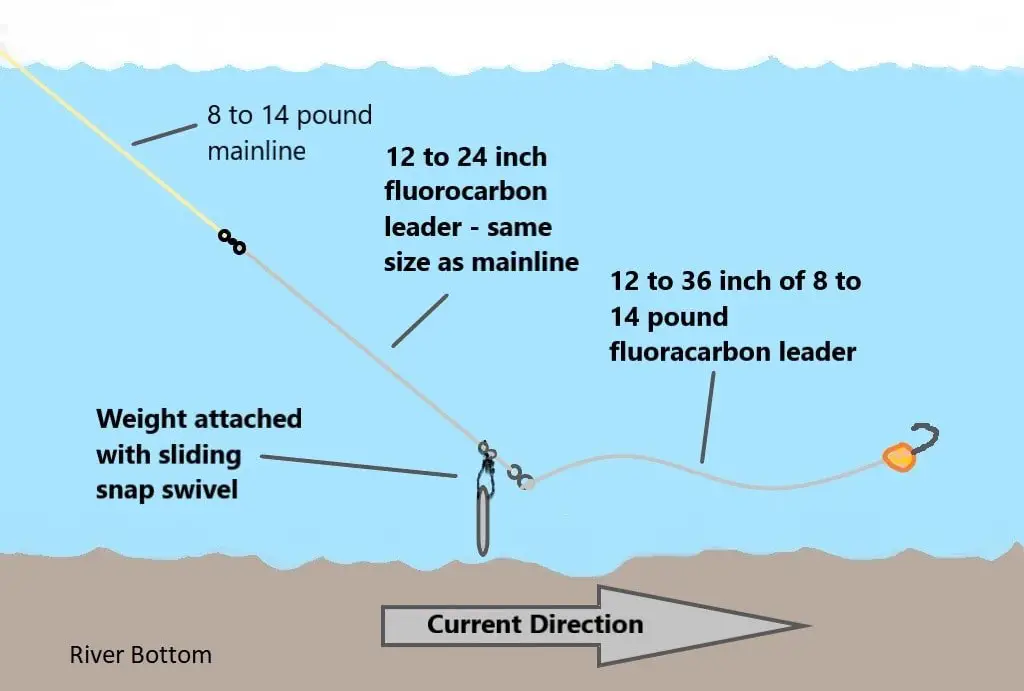
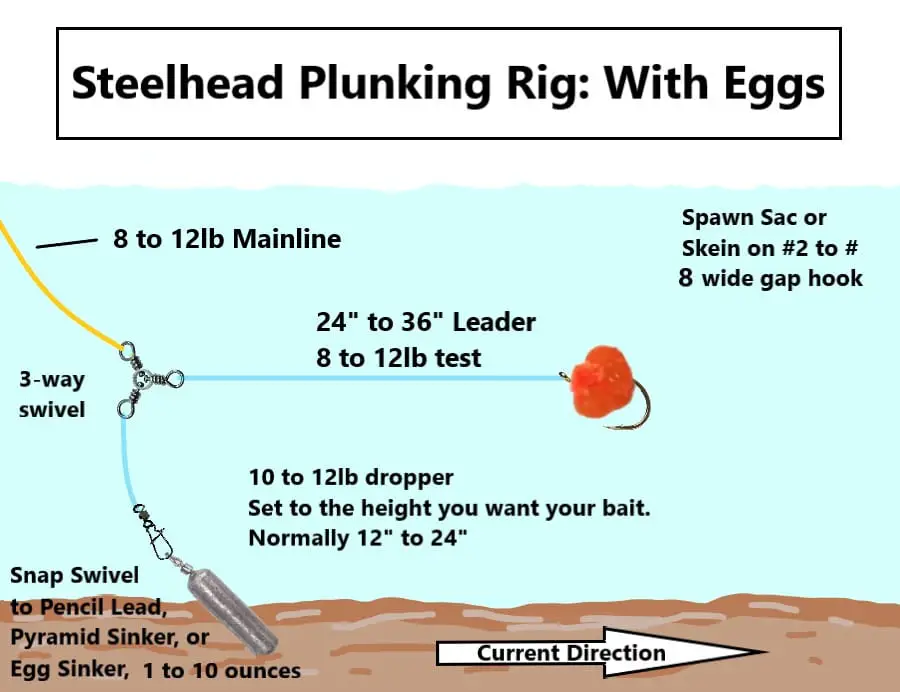
This method which many anglers call Plunking is suitable for fishing in still waters such as lakes, ponds, and reservoirs. It will also work well in rivers.
The bottom rig is most used in still water to target steelhead. The plunking rig is a steelhead rig for rivers or for casting out into the river mouths and ocean.
Bobber Doggin Fishing Rig
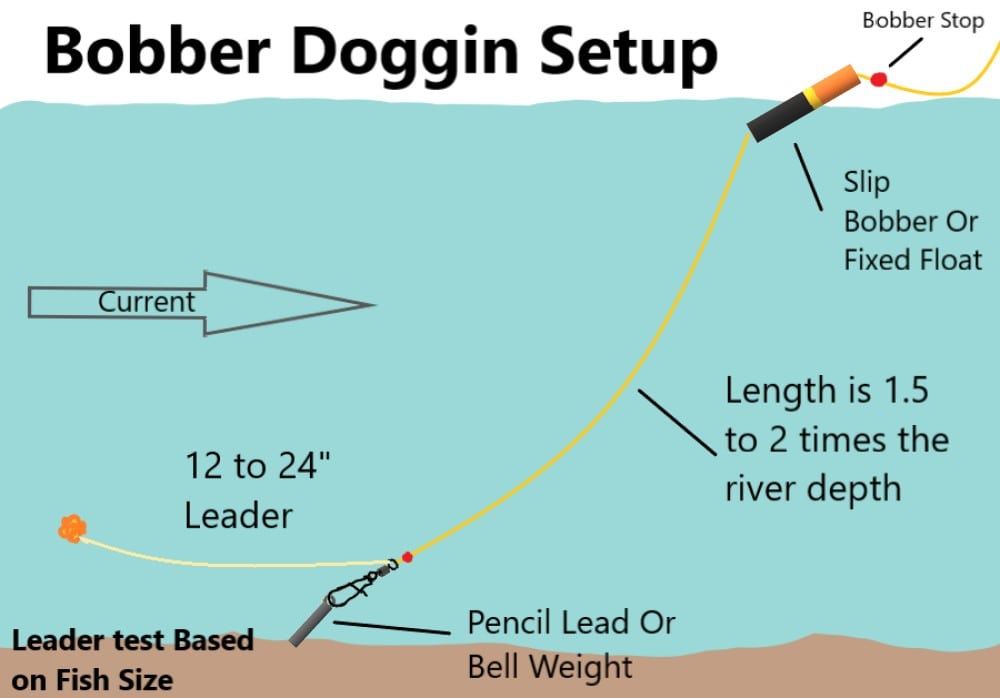
Bobber Doggin is a relatively new bobber fishing technique gaining popularity among anglers.
This method is applicable for fishing in rivers and can be utilized to target various bait-eating fish species found in currents.
The Steelhead Float Fishing Jig Rig
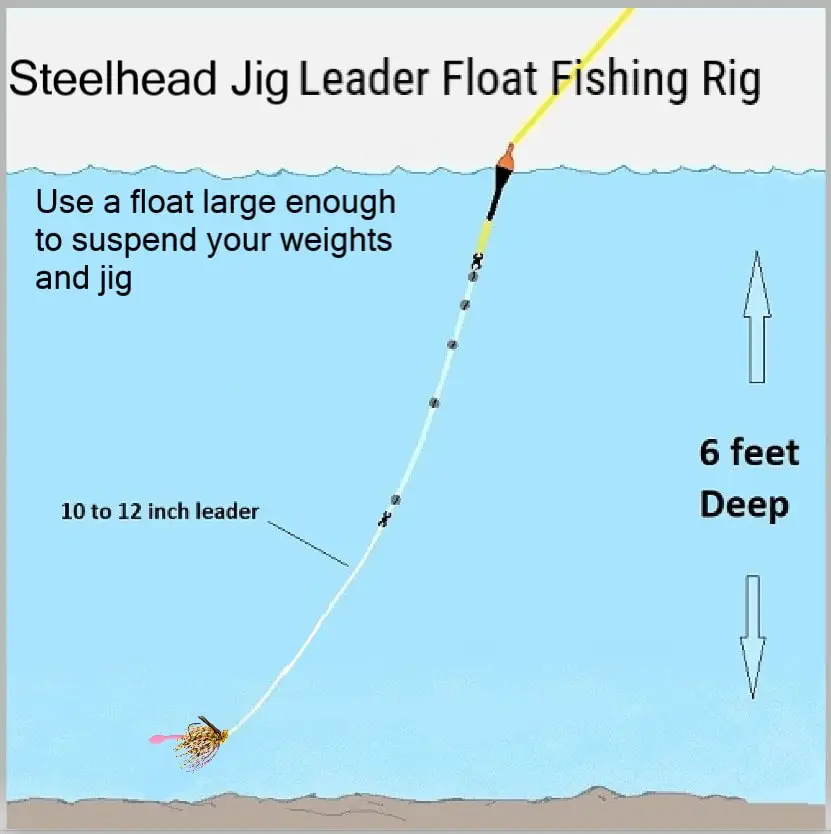
The other thing some anglers like myself do is fish jigs below a float. I also fish jigs with the drift fishing method and when bottom bouncing.
This is my basic steelhead float fishing jig rig setup but I have five steelhead jig rigs in my article Steelhead Jig Setup.
The Chuck N Duck Rig
Chuck n Duck fishing is used around the Great Lakes region, primarily on the USA side. It is a method used to fly fish deeper and faster rivers for steelhead.
The rig uses a weight called a “Slinky”, but can also use Pencil Lead, Drop Shot weights, and my favorite is a tag with spit shots on it. See these rigs and learn this method at Chuck And Duck Fishing: A Complete Guide.
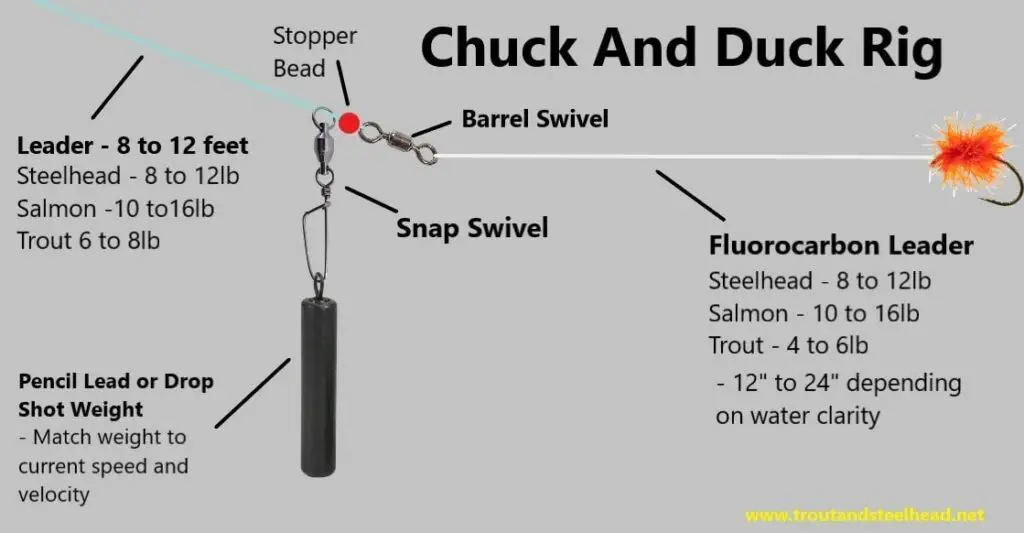
Tight Lines,
Graham
